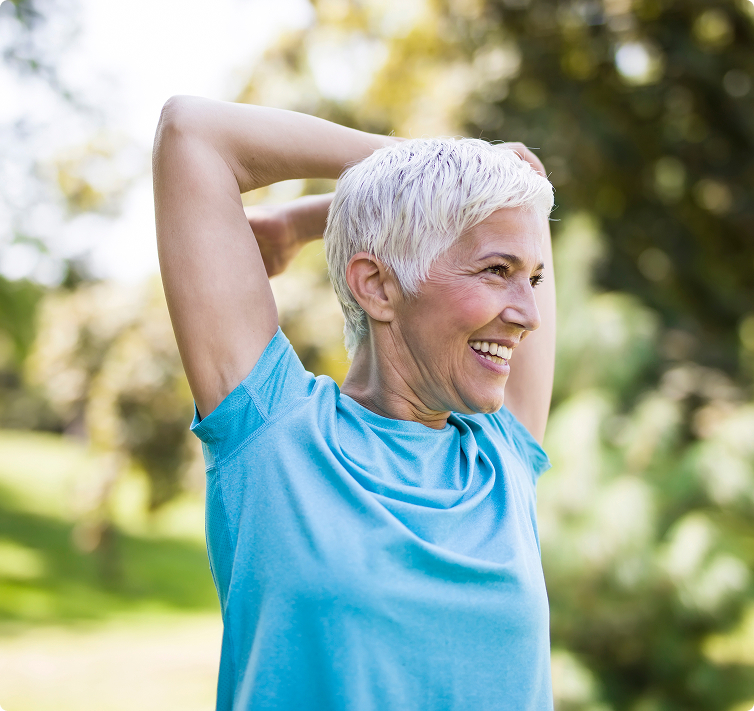Nerve Blocks
Fast-Acting Pain Treatments that Target Nerves in a Specific Part of the Body
Nerve blocks are versatile treatments used by pain specialists to diagnose and treat a wide range of painful conditions. They reduce acute pain due to injury, nerve trauma, surgery, and headaches. They are also used to alleviate chronic pain, in conditions like carpal tunnel syndrome, arthritis, neuralgia, cancer, and Complex Regional Pain Syndrome (CRPS).
Whether you are experiencing a new injury, a flare-up of an old injury, or an ongoing pain issue, nerve blocks can provide a faster and more comfortable recovery.
Facts and Information about Nerve Blocks
Nerve blocks are often used as treatments for pain due to a nerve injury or trauma. However, nerve blocks can treat many different types of pain, including bone and soft tissue pain.
Nerve blocks work directly at the source of pain by “turning off” a nerve's pain signals before they reach the spinal cord and brain. They stop pain in a well-defined part of the body, such as the face, head, shoulder, knee, abdomen, or finger. This limited area is represented (innervated) by a single nerve or a group of interconnected nerves, known as a ganglion or plexus.
Nerve blocks can treat joint pain. Many patients are not aware that nerve blocks can help with arthritis pain in a joint or with pain after a joint replacement. The most commonly treated joints are the knee (genicular nerve) and shoulder (suprascapular nerve). Blocking these nerves offers great options for both short and long term pain relief.
Nerve blocks have many benefits and are used to:
- Treat painful conditions
- Find the source of pain
- Predict the outcome of future treatments
- Prevent chronic pain from a surgery
- Reduce pain and improve recovery after a surgery
Different Types of Nerve Blocks
Several different treatments fall under the “nerve block” category.
- A Single nerve block - medicine is injected around one nerve that is injured or flared up. If this nerve is in an outer part of the body such as an arm or leg, it is considered a Peripheral nerve block.
- A Ganglion block (or Plexus block) - medicine is injected around a group of interconnected nerves that serves a large body area such as the abdomen or pelvis. This type of block is often used for abdominal pain, pelvic pain, coccyx pain, rectal pain, and cancer pain.
- A Sympathetic nerve block (or injection) - medicine is injected along a chain of nerves that controls general body functions. (Commonly used for CRPS). Click here to read more.

-
1Get Started!Find a Doctor or Location that’s best for you! Find a Doctor
-
2Schedule an Appointment
-
3Prepare for AppointmentComplete the pre-appointment paperwork before your visit.
-
4See You at Your Appointment!We appreciate your trust and look forward to building a care plan for you.
What are the Expected Results
Pain relief after a nerve block is immediate, usually starting within a couple of minutes to a half hour after the procedure. The effect of the local anesthetic usually lasts a couple of hours, but the effects can extend to several weeks and months. Some people find relief after a single nerve block while others may need a series of nerve blocks spaced over several months. Depending on the type of nerve block performed, patients who receive pain relief with the nerve block may be candidates for a nerve radiofrequency procedure. A radiofrequency procedure creates a lesion in the nerve to stop the nerve from sending pain signals for 6 months, up to 1 year.
-
Pioneering Pain
SolutionsOur doctors don't just use advanced treatments—they pioneer them. -
Quality-Assured
CareComprehensive quality protocols ensure consistent, exceptional care. -
Learning &
LeadingContinuous training and education keep us at the forefront of pain management. -
A Mission
of ReliefYour freedom from pain isn't just our goal—it's our reason for being.

